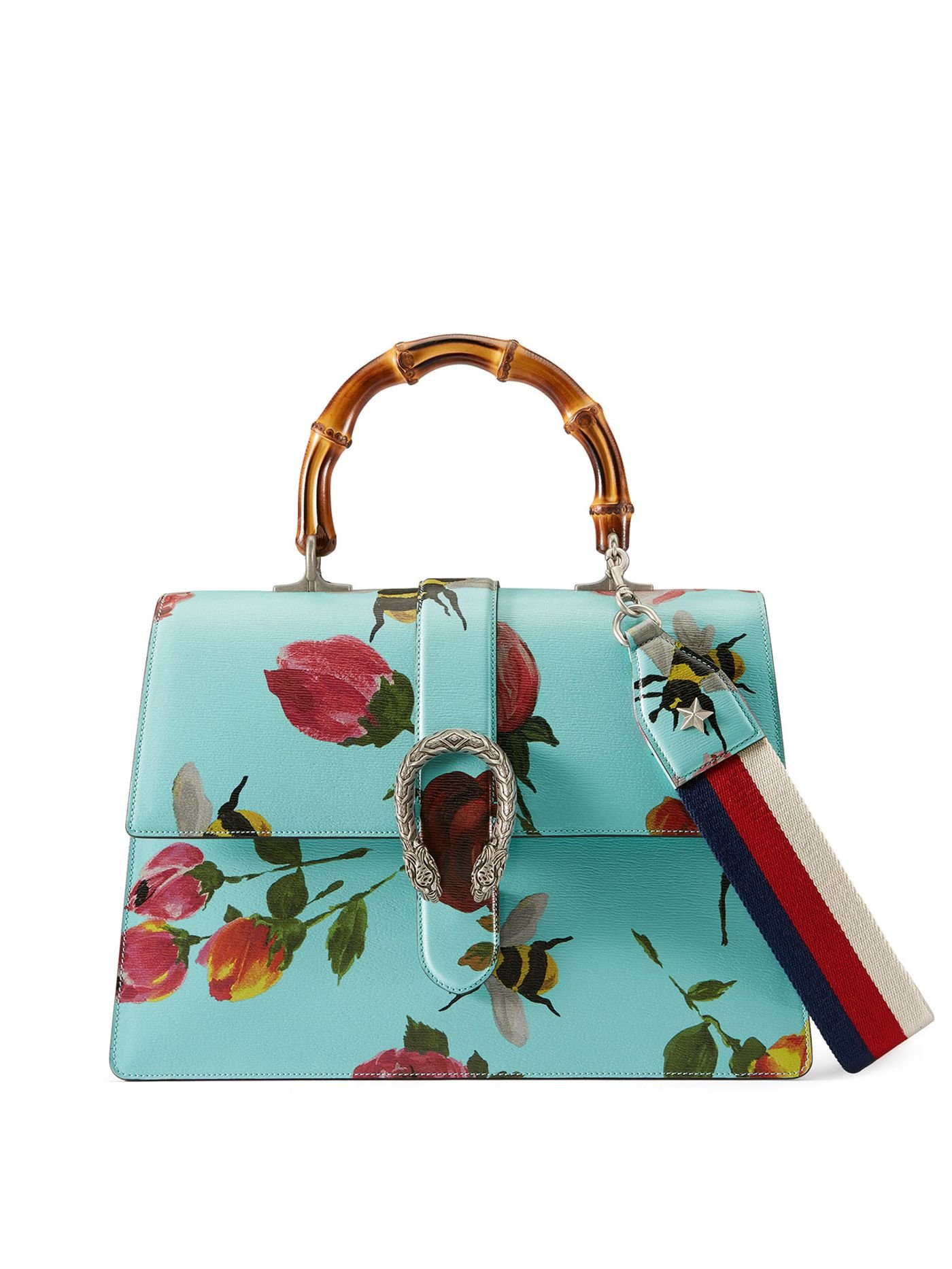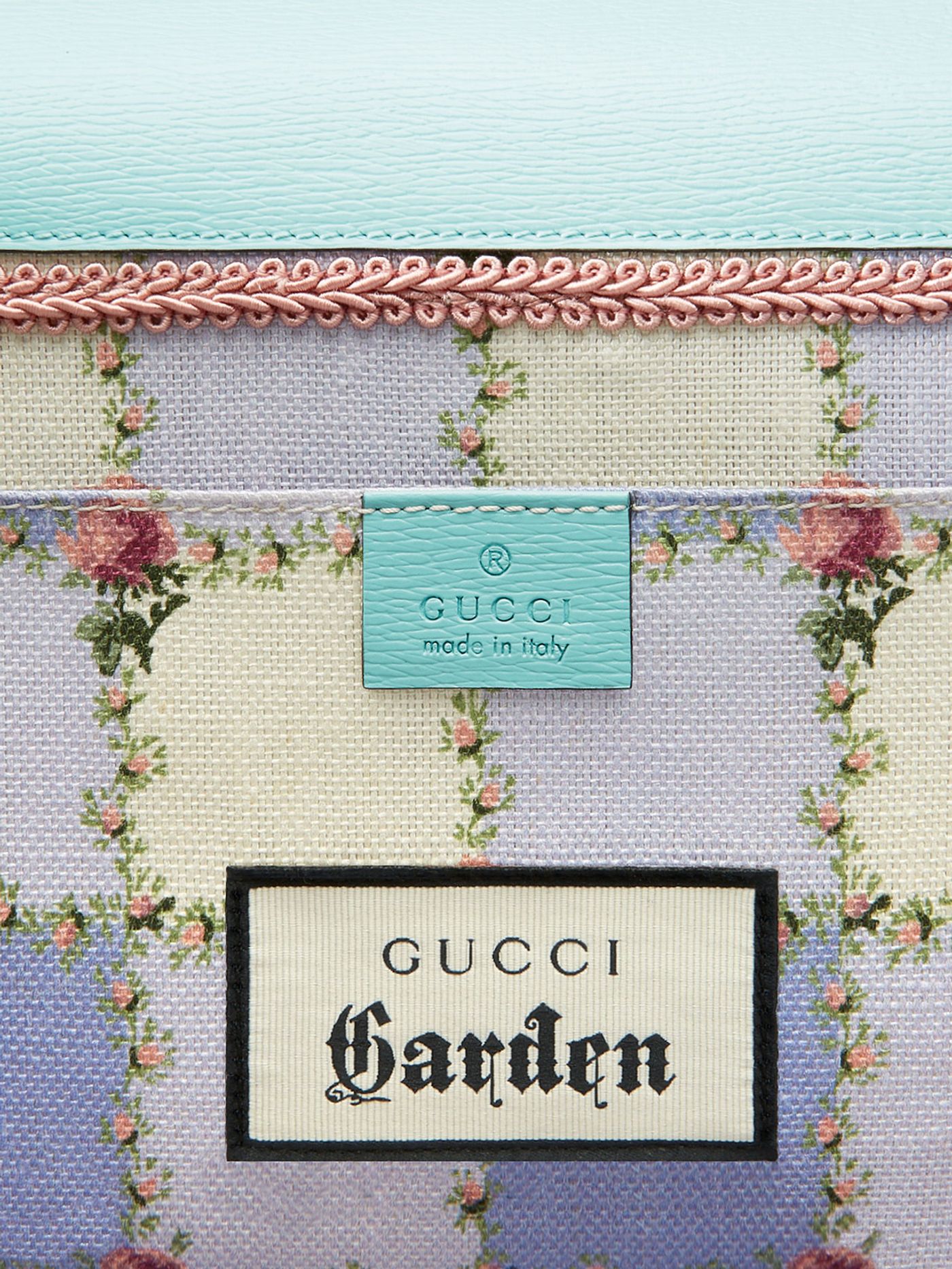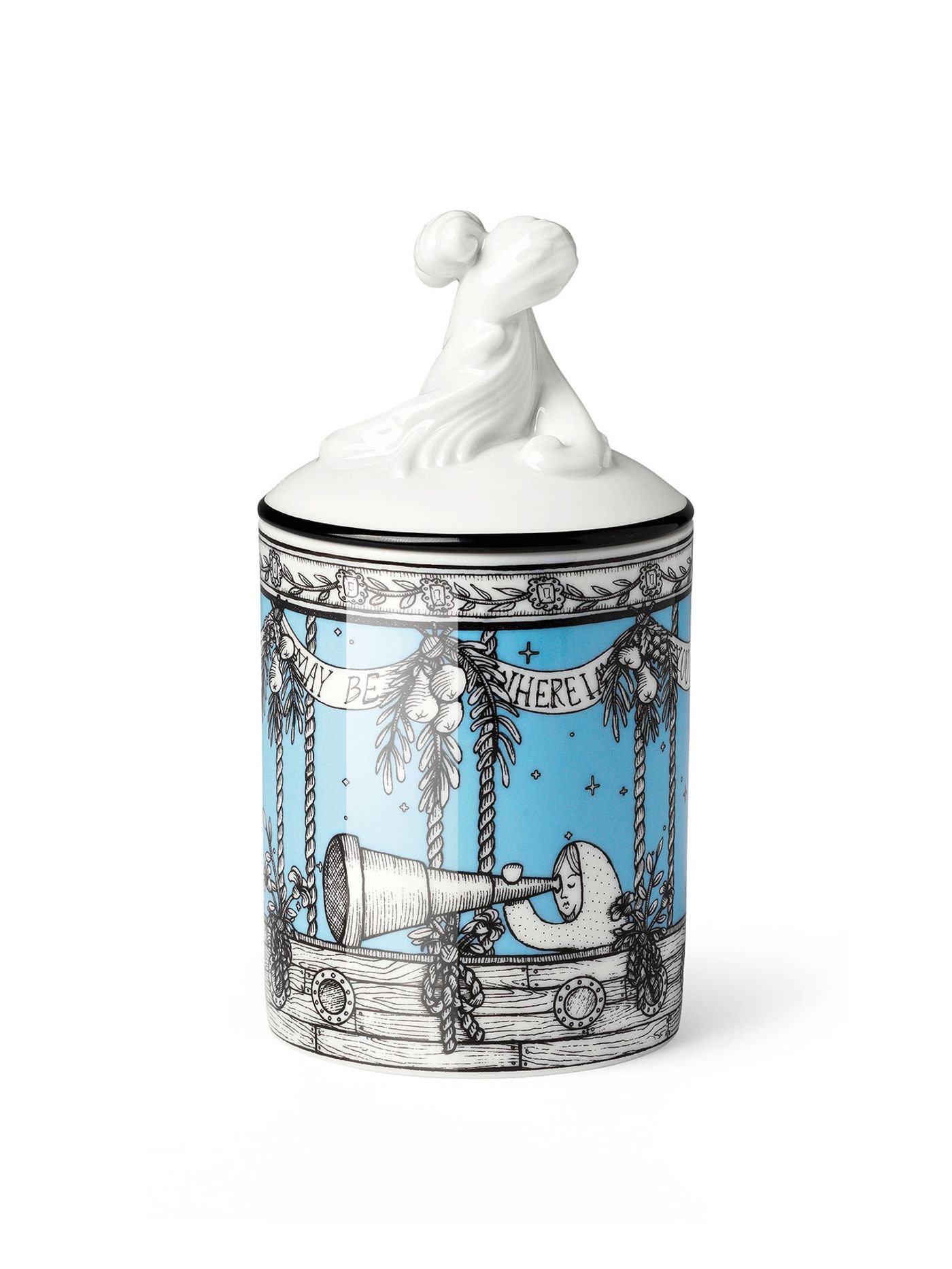The Maximalist Menagerie of Alessandro Michele’s Immersive Gucci Garden in Florence
Words by Eric David
Location
Florence, Italy
The Maximalist Menagerie of Alessandro Michele’s Immersive Gucci Garden in Florence
Words by Eric David
Florence, Italy
Florence, Italy
Location
Gucci, a venerable Florentine fashion house of almost a century, is a brand that has no qualms about upending its rich history in the name of creativity and originality. This ethos is prominently displayed in the complete re-design of the Palazzo della Mercanzia, home since 2011 to the Gucci Museo. The 14th century majestic palazzo at Piazza della Signoria, the historic central square in Florence, couldn’t be a more suitable location for Gucci Garden, an interactive venue that showcases Gucci's vision for the future, its distinct aesthetic and its evolving philosophy all the while glancing back at its celebrated history. Conceived and designed by Gucci's creative director Alessandro Michele, it brings together two floors of gallery spaces with a new restaurant by a three-Michelin-star chef, and a gift shop-cum-boutique that exclusively sells one-of-a-kind products, inviting visitors to immerse themselves in Gucci’s multi-sensory, all-inclusive universe.
Curated by fashion curator and critic Maria Luisa Frisa, the Gucci Garden Galleria takes over the first and second floors of the Palazzo in a series of exhibition rooms showcasing the extraordinary and eclectic creativity at the heart of Gucci. Frisa has eschewed a staid curation of chronological order preferring instead to confrontationally combine the past with the present in thematic groups whereby recent clothes and accessories are mixed with vintage pieces dating as far back as the House's 1921 Florentine beginnings, memorabilia and ephemera sit side by side with contemporary artworks, and archival documents are accompanied by video installations.

Silk handkerchief from the Gucci Garden series. Photo © Gucci.
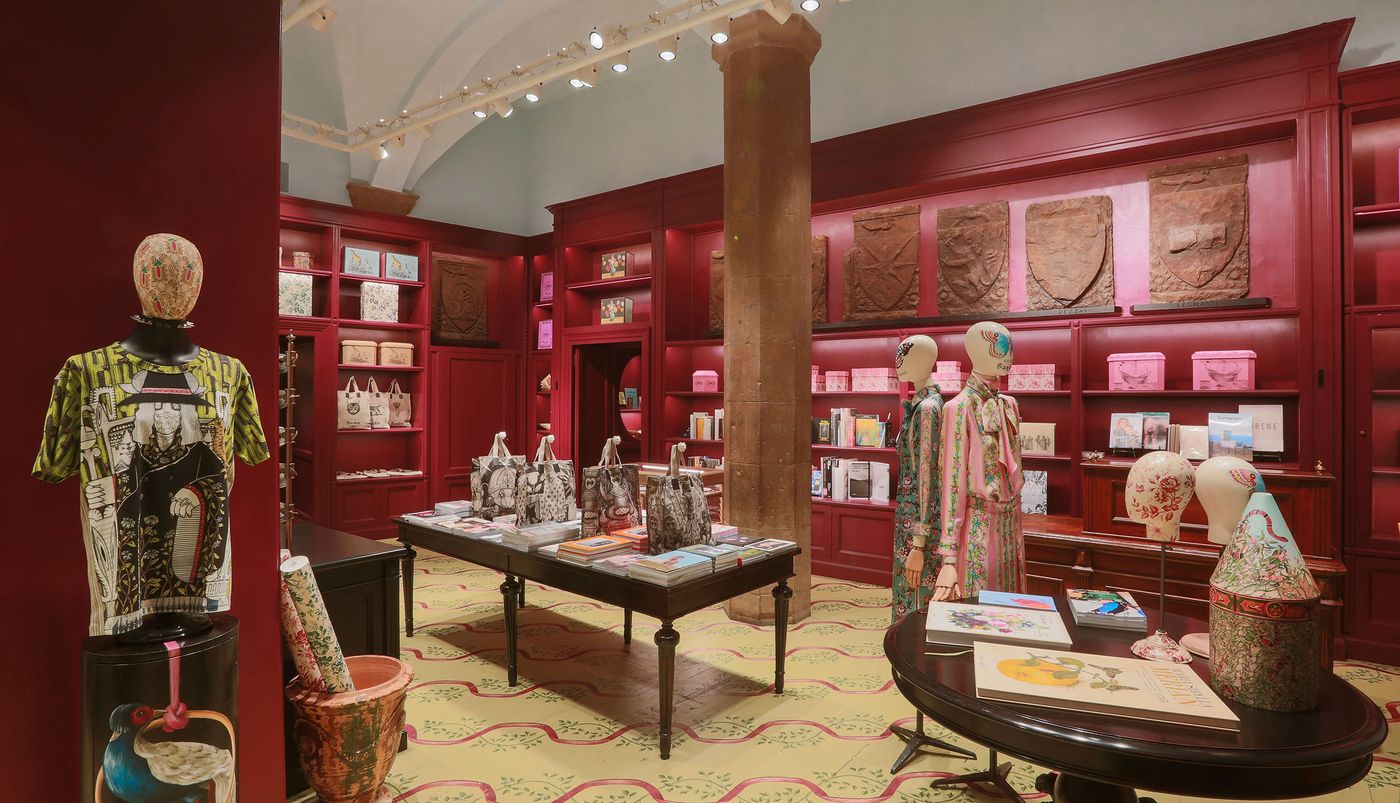
Gucci Garden Bookstore. Photo © Gucci.
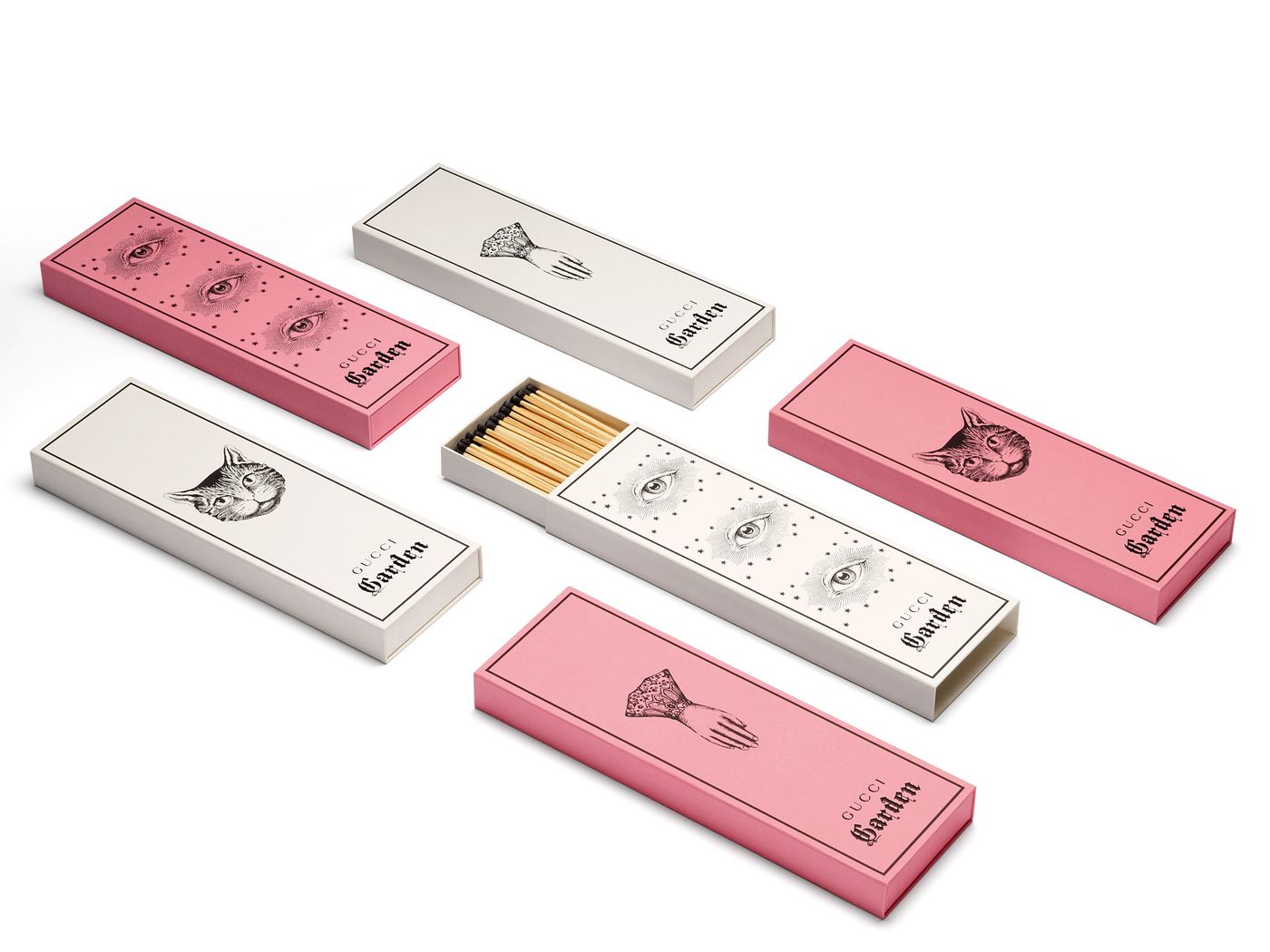
Matches from the Gucci Garden series. Photo © Gucci.
Entering the Galleria, visitors are fittingly welcomed by GUCCIFICATION, a room where the brand’s GG logo is showcased through the numerous iterations it has gone through, including the iconoclastic version that street artist Trevor Andrew has created for the Gucci Ghost collection, a collaboration that is part of Michele's strategy to tap into the internet culture. Andrew's signature "REAL LOVE" logo can also be seen on the gallery walls as are, in subsequent rooms, Jayde Fish’s quirky illustrations and Coco Capitán’s metamodernist statements.
PARAPHERNALIA, focuses on the brand’s famous icons, such as the loafers, the red and green striped ribbon, the signature prints and the use of bamboo, while COSMORAMA, which is introduced by a video installation—‘‘Obbiettivo sulla cronaca. Firenze Moda in pelle’’, black and white footage from 1967 showcasing Gucci’s new Florentine store—is dedicated to bags, suitcases and luggage, as it explores the brand’s origins as a leather goods manufacturer and taps into its cosmopolitan ethos.
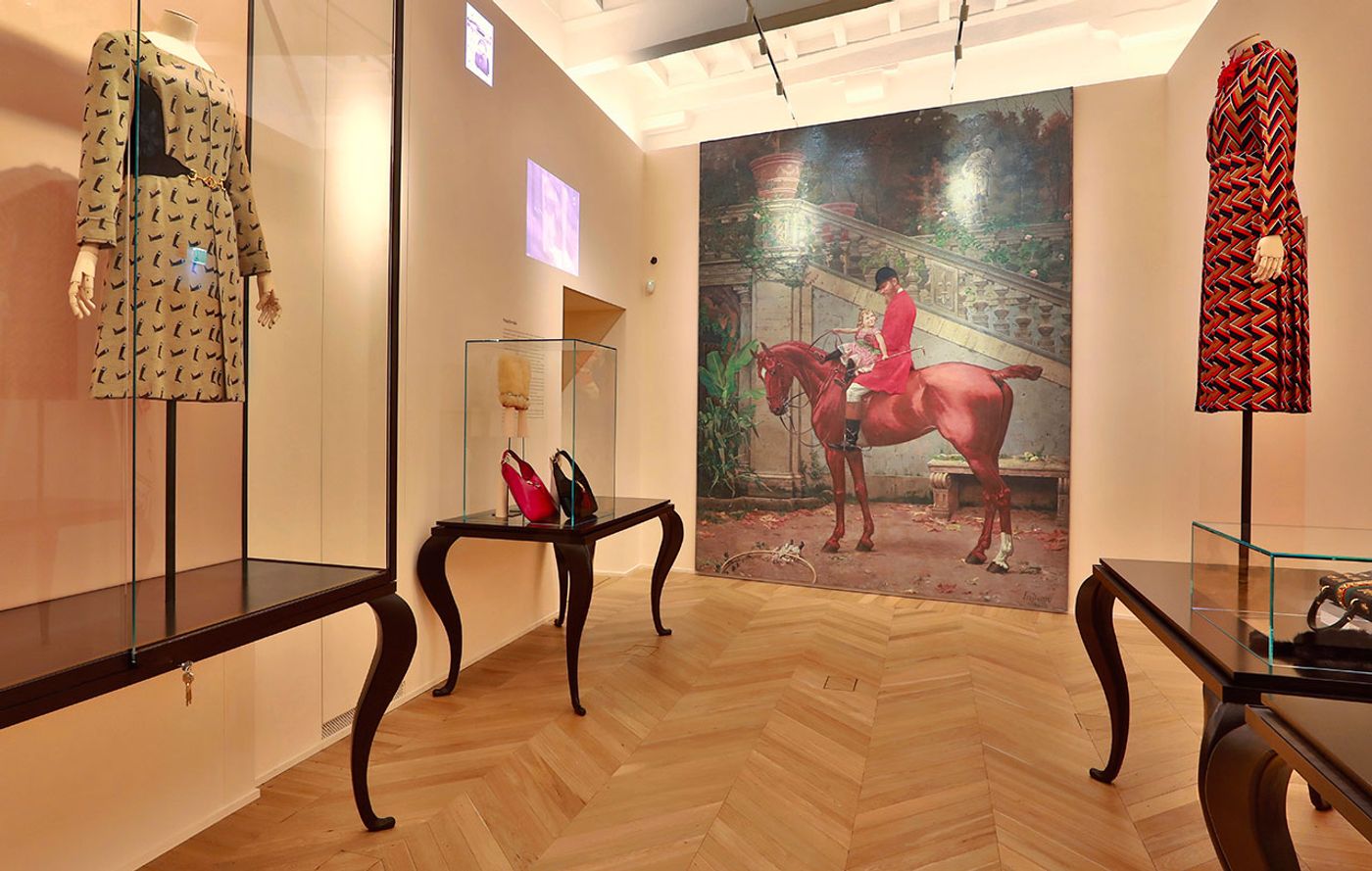
Gucci Garden, Paraphernalia room. Photo © Gucci.
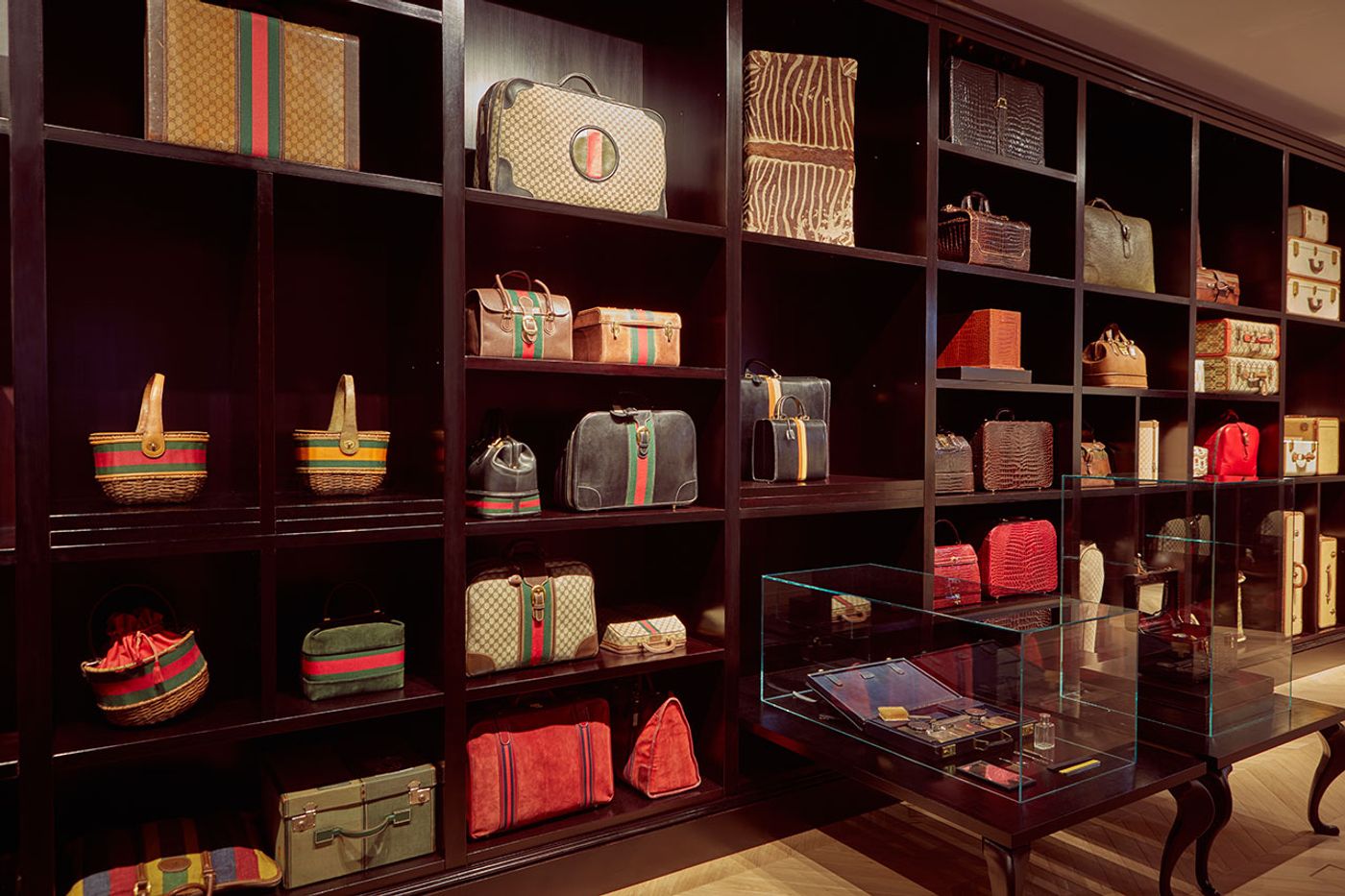
Gucci Garden, Cosmorama room. Photo © Gucci.
In the rooms entitled DE RERUM NATURA on the second floor, Gucci Garden Galleria’s most iconographic tribute to its name, Michele’s passion for flora and fauna, a preference which has been present since the brand’s inception, is colourfully displayed through current and vintage clothing, accessories and objects, as well as original artwork by Vittorio Accornero who was commissioned to create the Gucci Flora print in 1966.
The Galleria is completed by EPHEMERA, where visitors can trace the brand’s story through documents, videos, memorabilia and selected products, and a small tented auditorium of red velvet where the audience of 30 can watch experimental films.

Dress from the Gucci Garden series. Photo © Gucci.
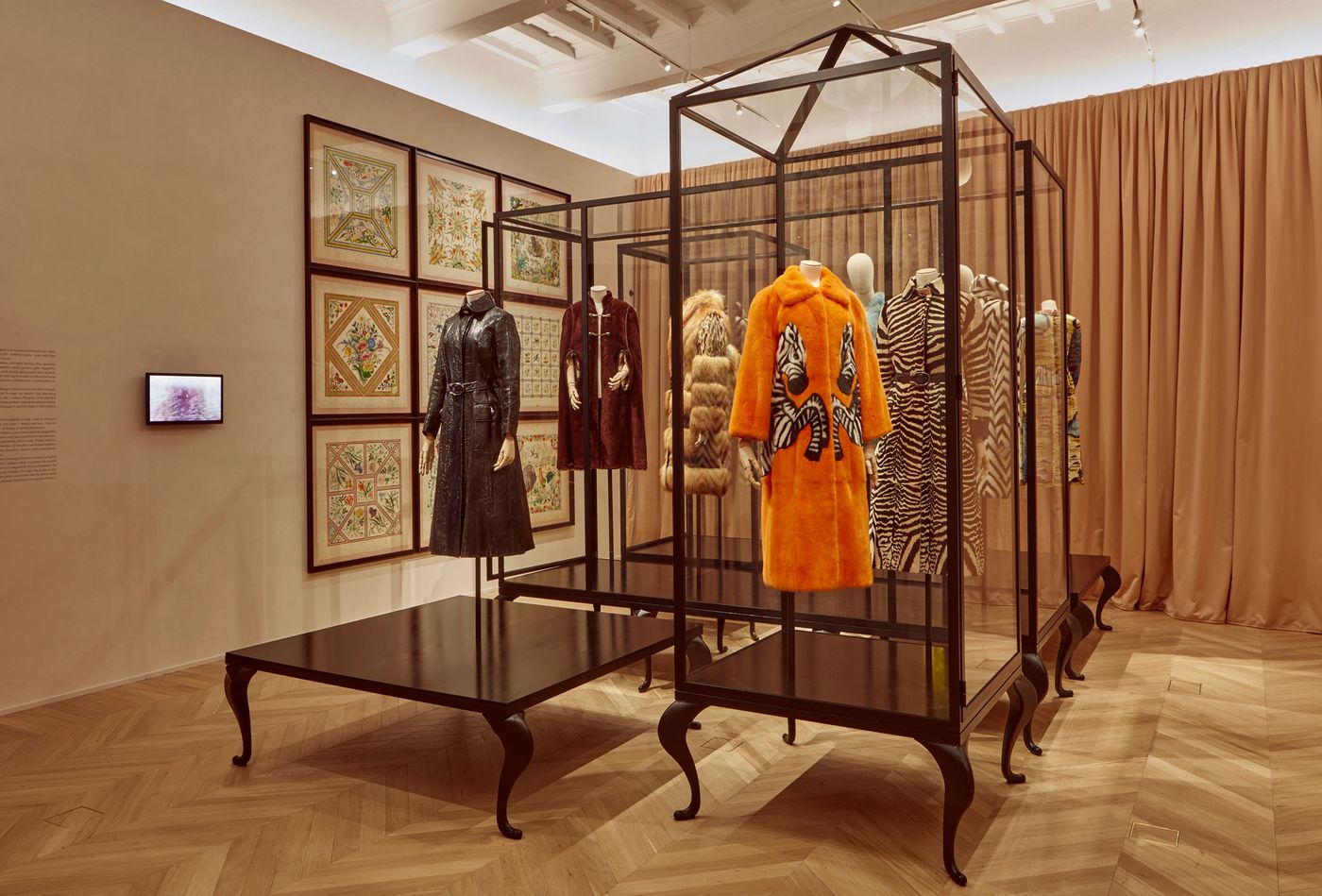
Gucci Garden, De Rerum Natura room. Photo © Gucci.
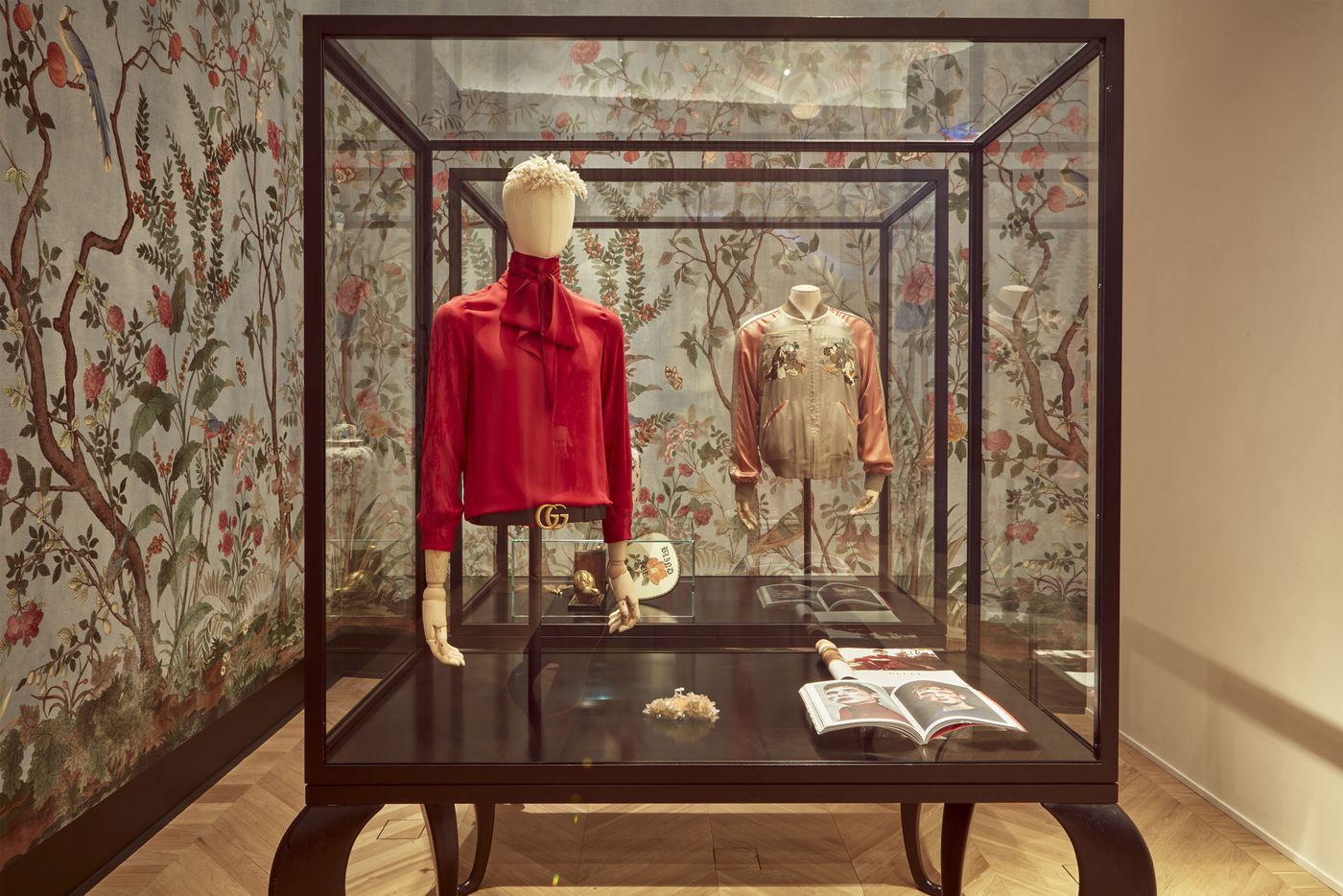
Gucci Garden, De Rerum Natura room . Photo © Gucci.
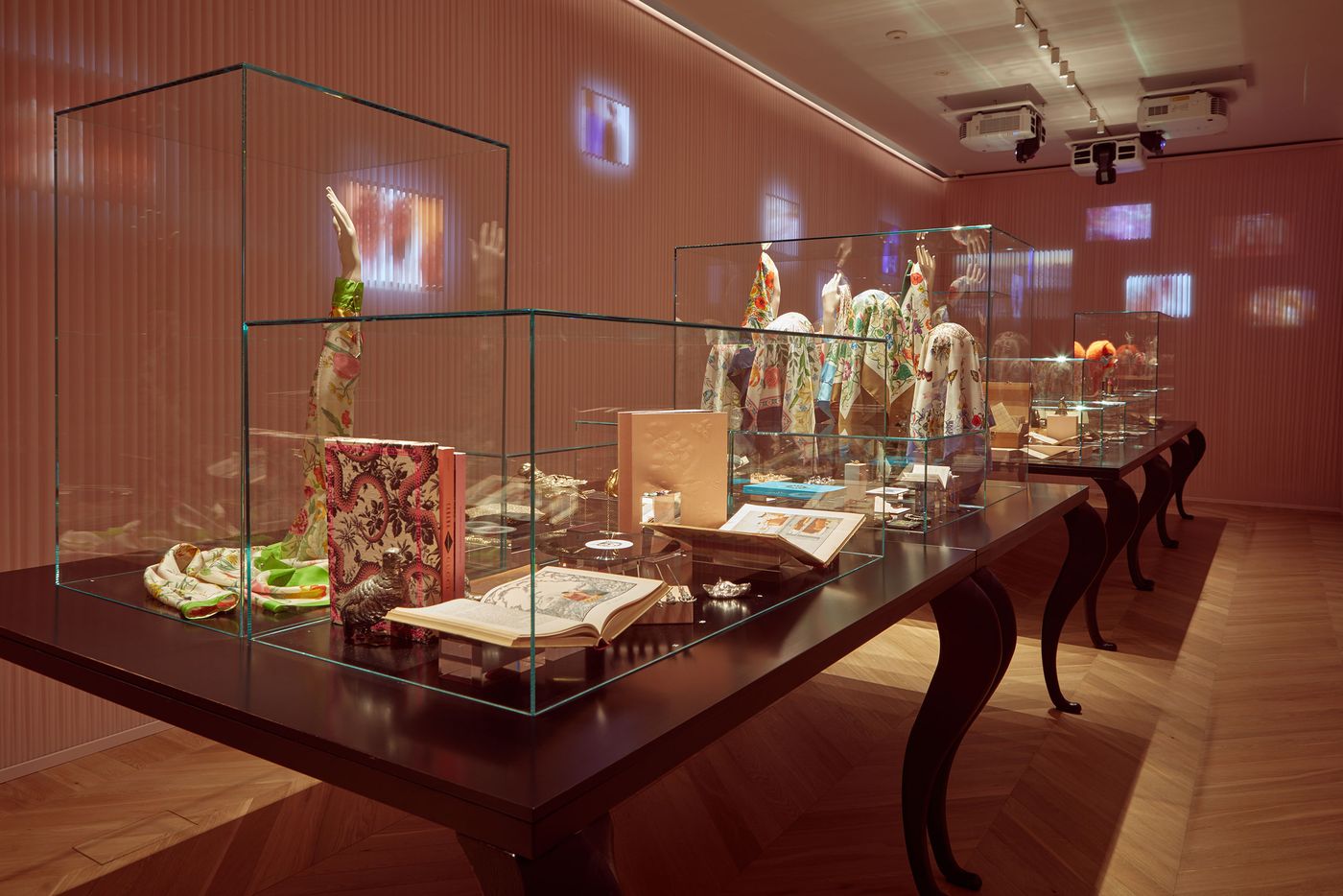
Gucci Garden, Ephemera room. Photo © Gucci.
On the ground floor, the Gucci Osteria and the Gucci Garden Boutique allow visitors to partake in the Gucci experience by indulging in a new, all-day menu created by three-Michelin-star chef Massimo Bottura, or exclusive Gucci products, from ceramics to chairs and from ready-to-wear to magazines and books, sold in Michele’s extravagant version of a museum gift shop.
Inspired by his travels around the world, Bottura has infused the Italian dishes of his menu with unexpected twists, a reminder as he says that Florence has always been a centre of cultural exchange since the Renaissance. In fact, the whole project can be said to pay homage to the city of Florence, its rich history of art and craftsmanship referenced in Gucci’s legacy of artisan workmanship. Moreover, half of the proceeds from ticket sales to the Galleria are going towards restoration projects in the city.
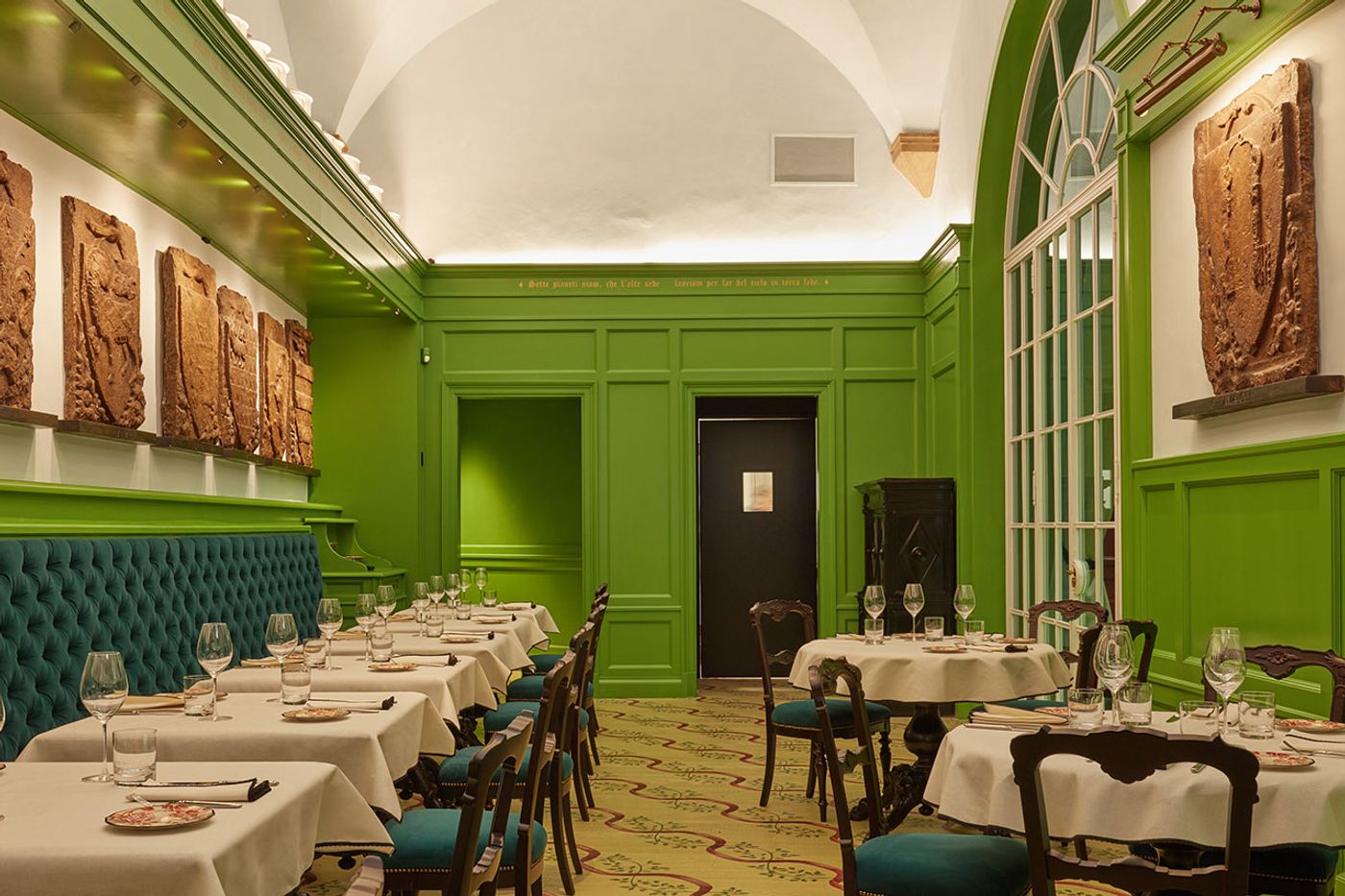
Gucci Garden, Gucci Osteria da Massimo Bottura. Photo © Gucci.
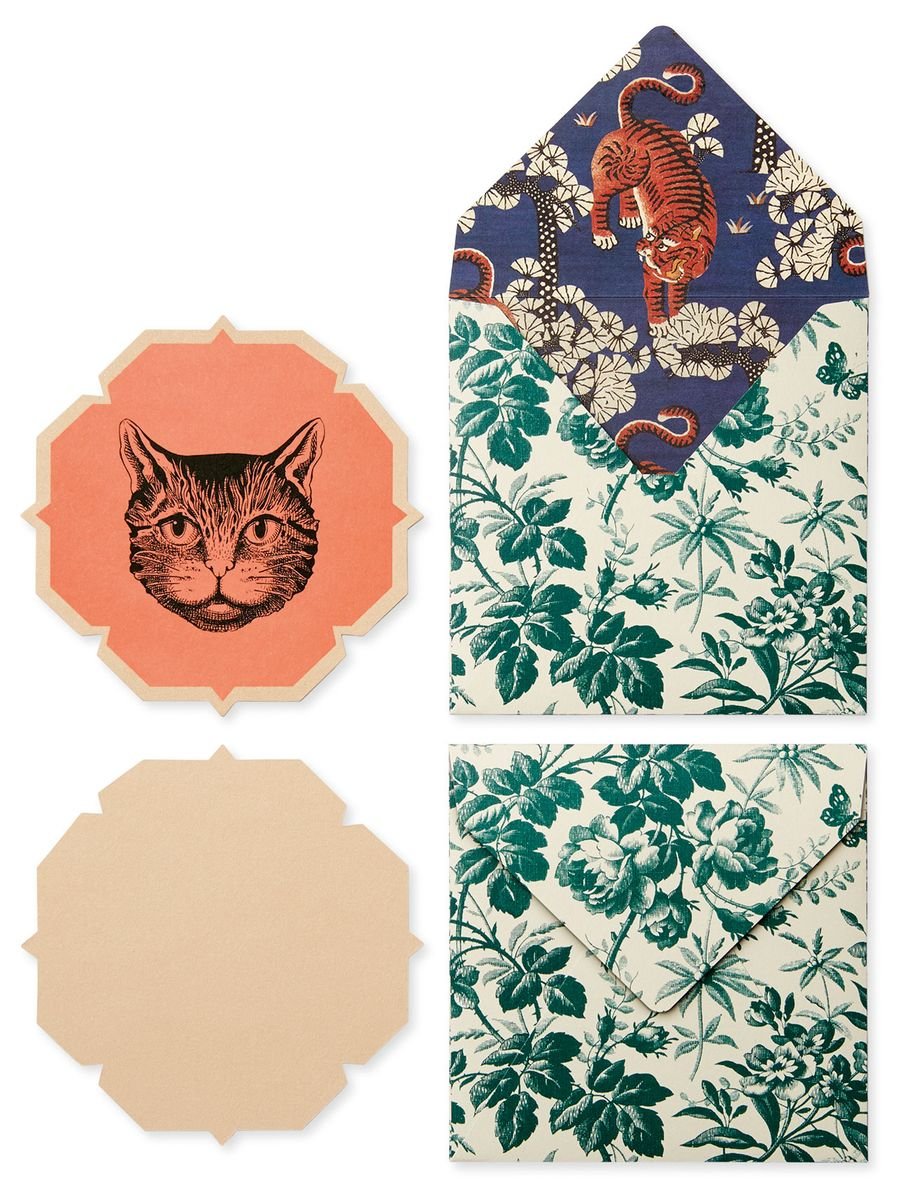
Stationery from the Gucci Garden series. Photo © Gucci.
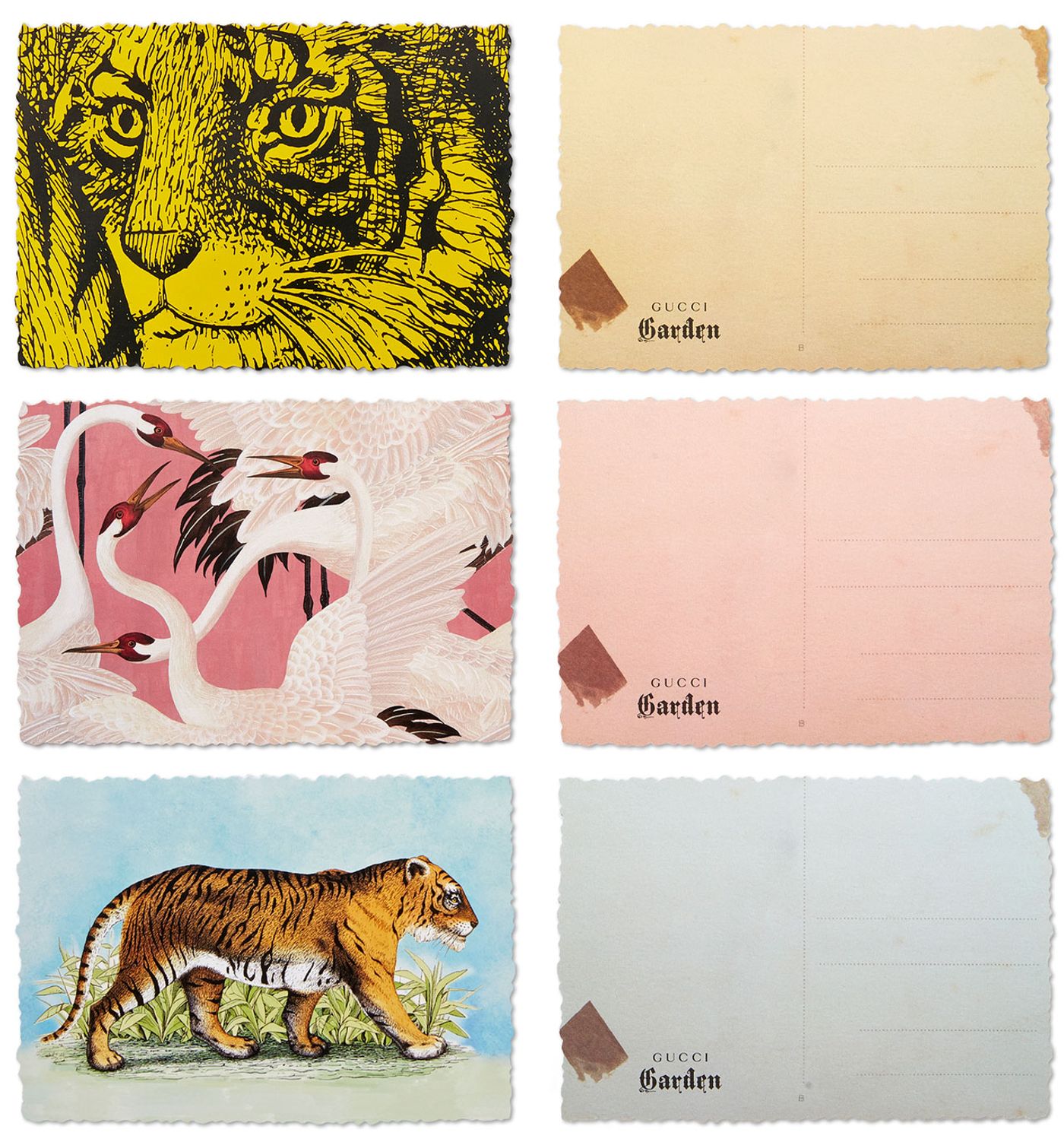
Stationery from the Gucci Garden series. Photo © Gucci.
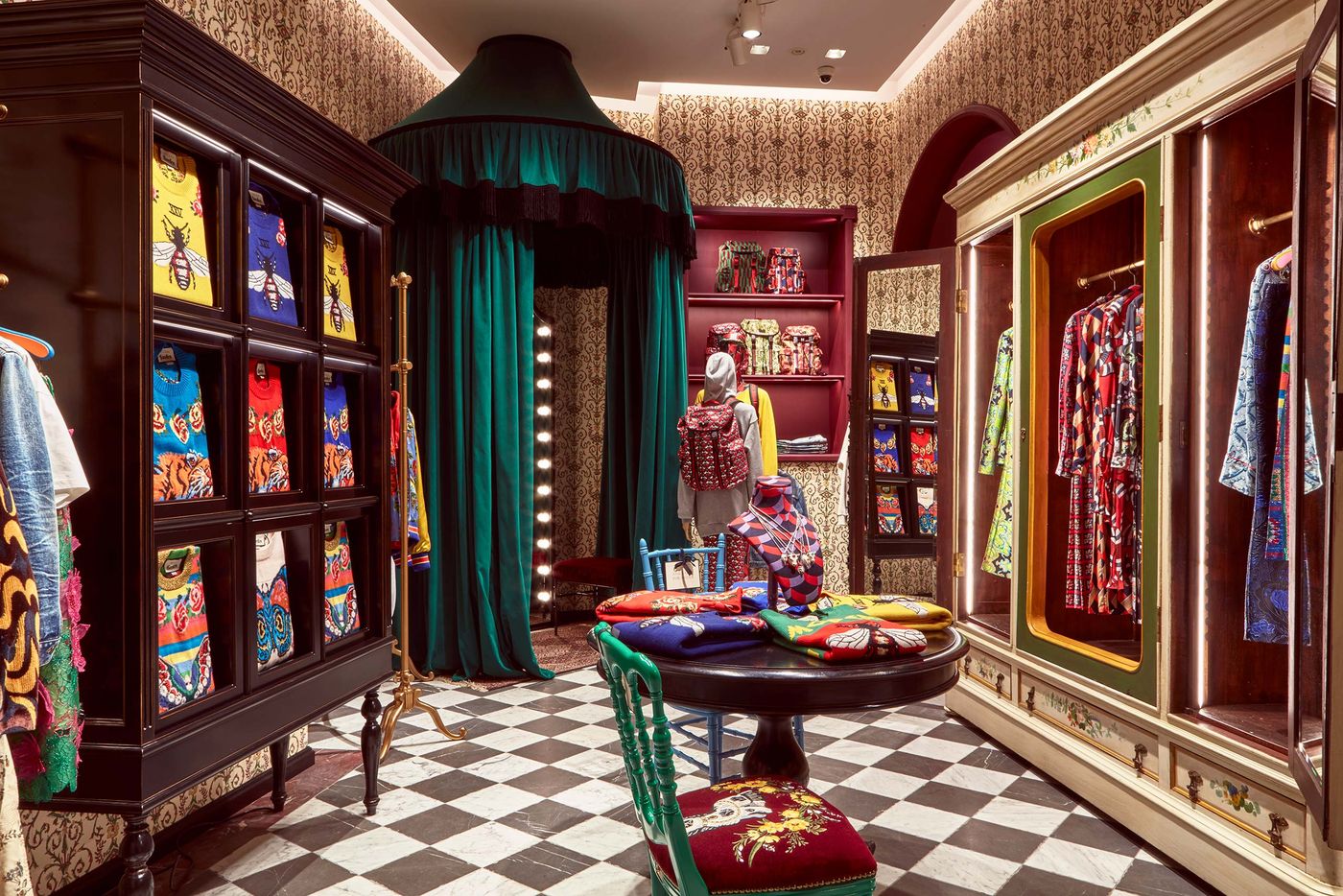
Gucci Garden Boutique. Photo © Gucci.
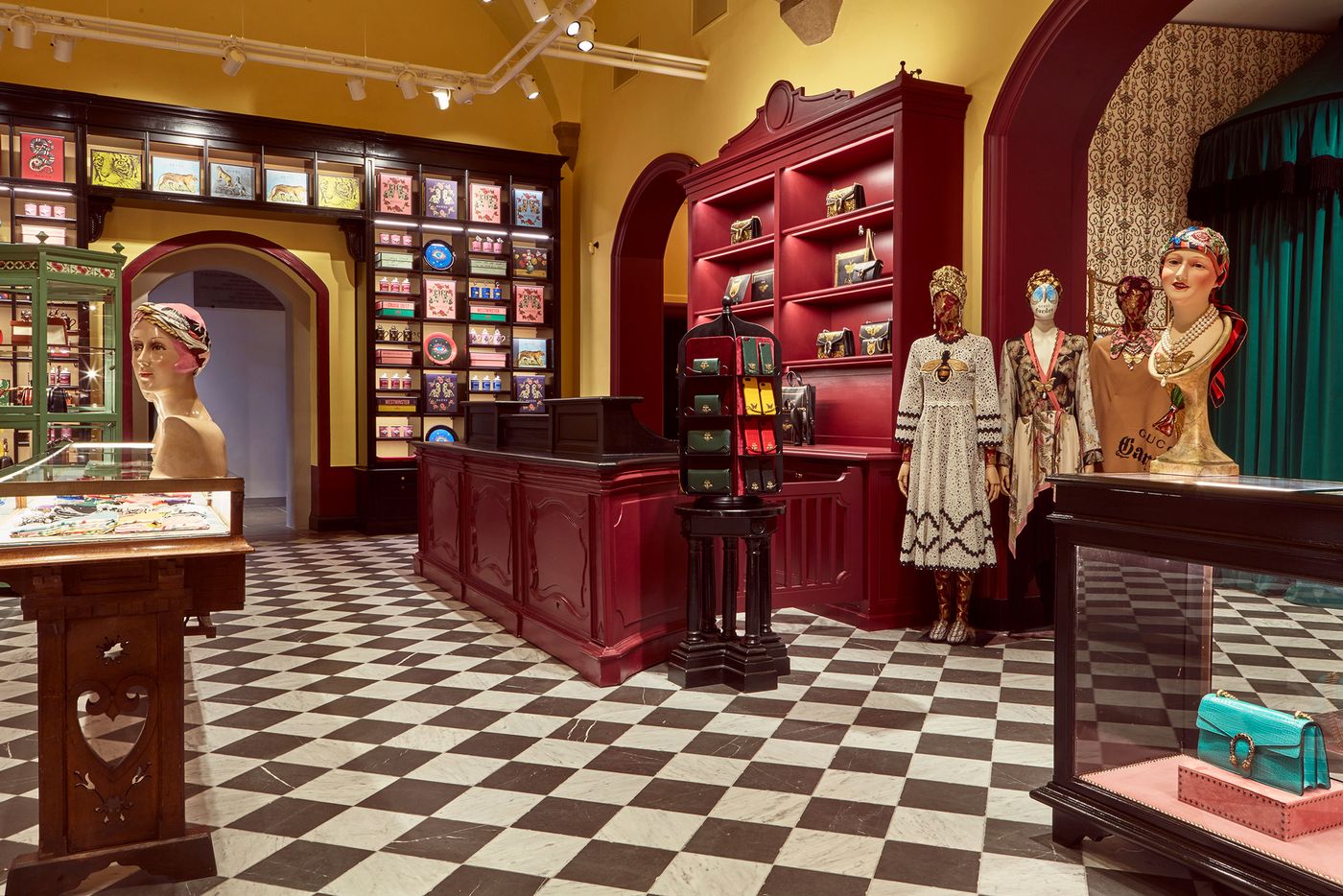
Gucci Garden Boutique. Photo © Gucci.
The boutique is a series of imposing rooms that have been designed to reflect the original architecture of the Palazzo furnished by antique-shop finds like tables, sideboards and cabinets, which have been repaired and painted in a range of distinct Florentine colours. Ready-to-wear and accessories from the Gucci Garden label, which are exclusive to this store, as well as pieces from the Gucci Décor collection, are displayed in rooms featuring hand-aged, black and white floor tiles, oriental rugs, burnt yellow plaster walls and vintage floral patterned wallpaper. Next door, rooms of hand-painted wooden floorboards, original stone pillars and a display of merchants’ coats of arms in stone are dedicated to accessories and publications, selling gift items like stationary, postcards, matches, canvas bags, music boxes and maps of Florence, as well as niche magazine titles and antique tomes sourced from the Antica Libreria Cascianelli in Rome.
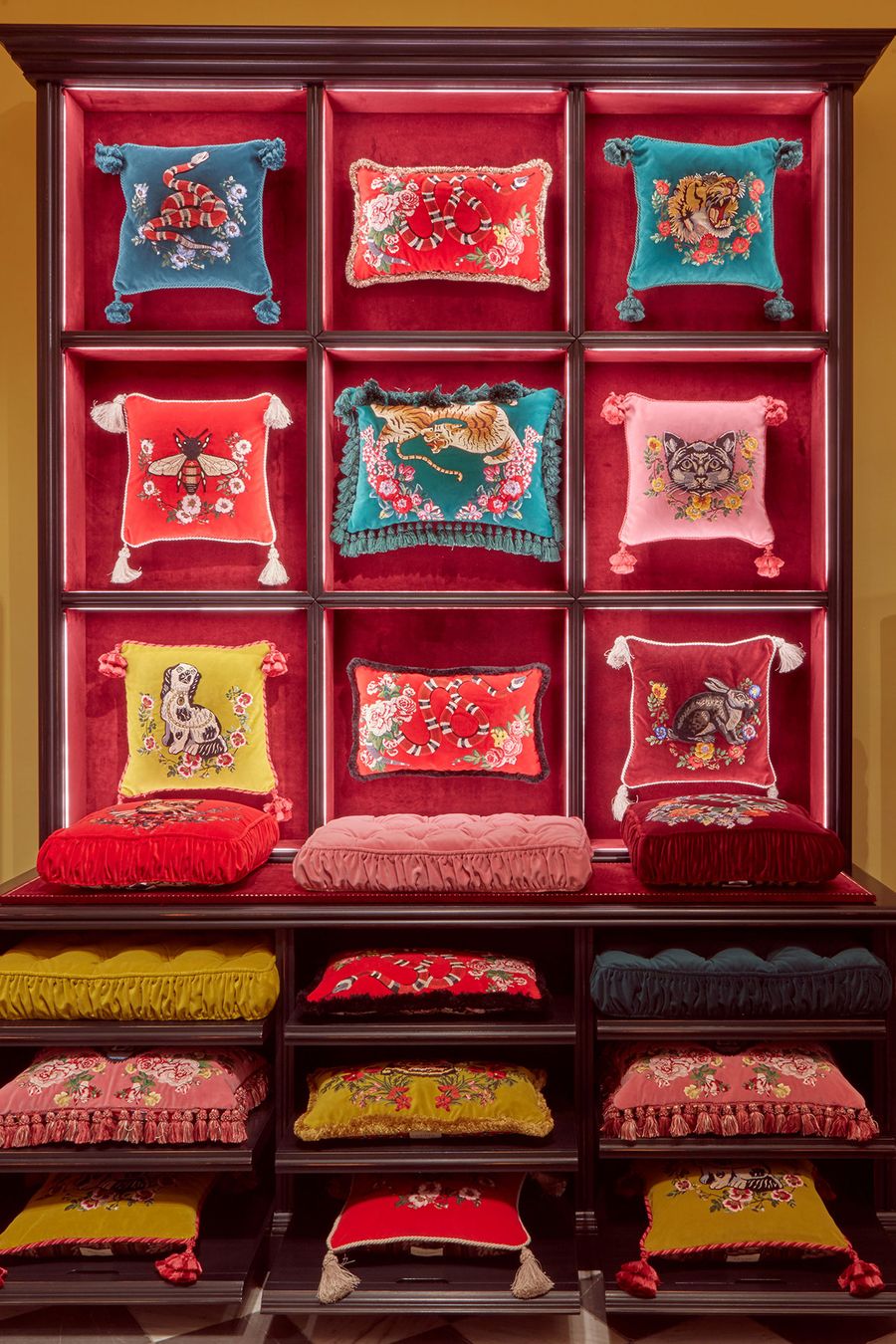
Gucci Garden Boutique. Photo © Gucci.

Gucci Garden Boutique. Photo © Gucci.
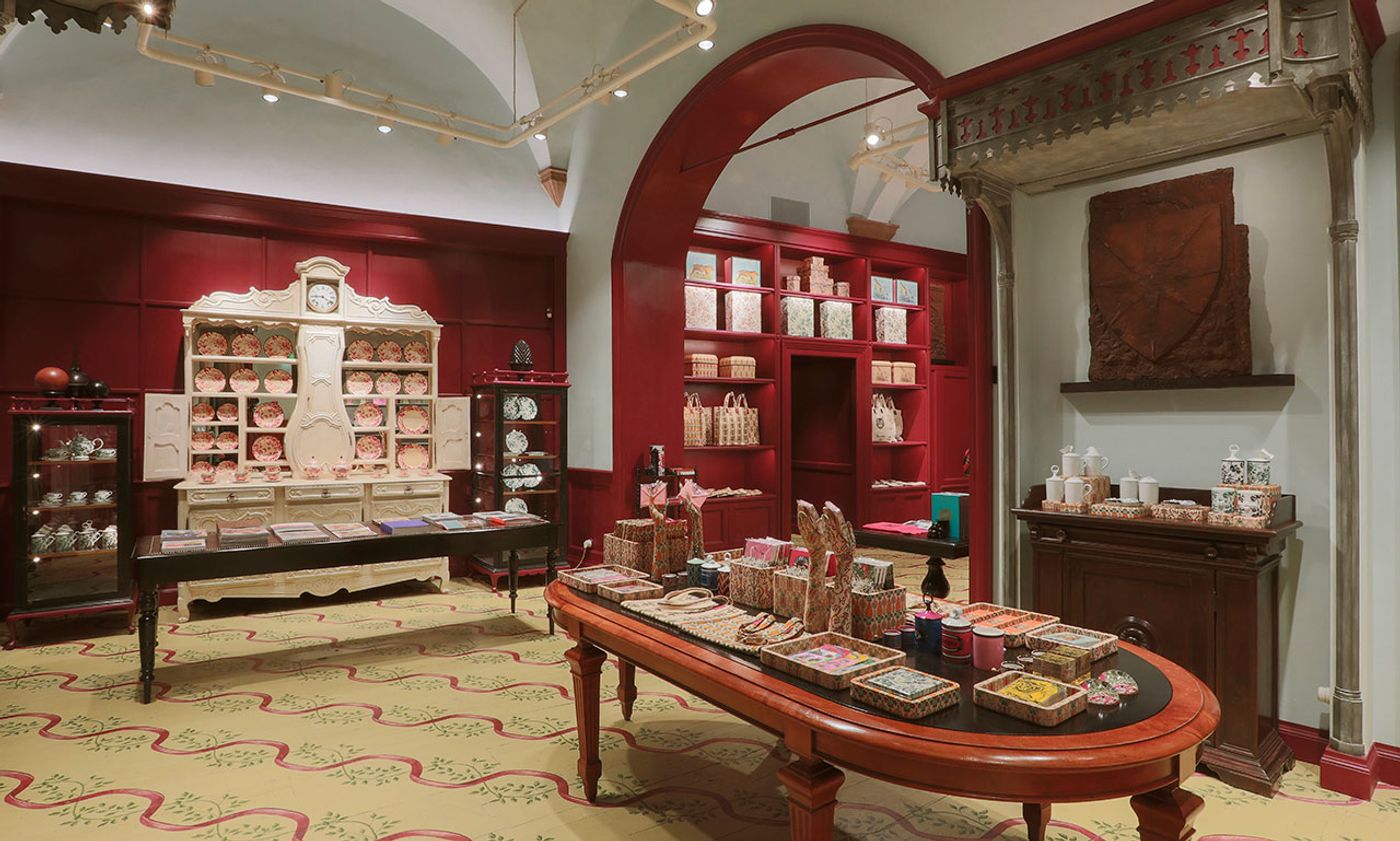
Gucci Garden Bookstore. Photo © Gucci.

T-shirt from the Gucci Garden series. Photo © Gucci.
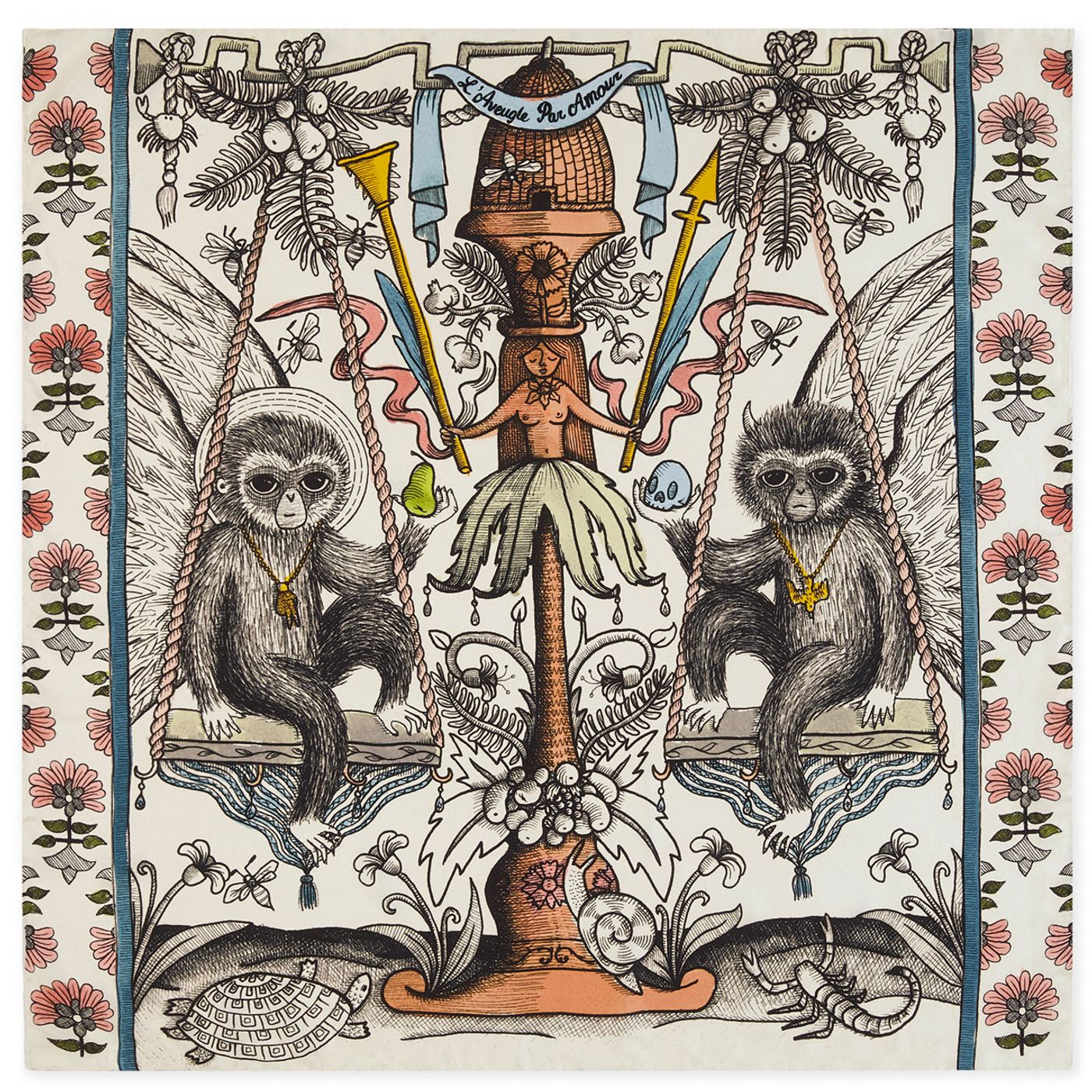
Silk handkerchief from the Gucci Garden series. Photo © Gucci.
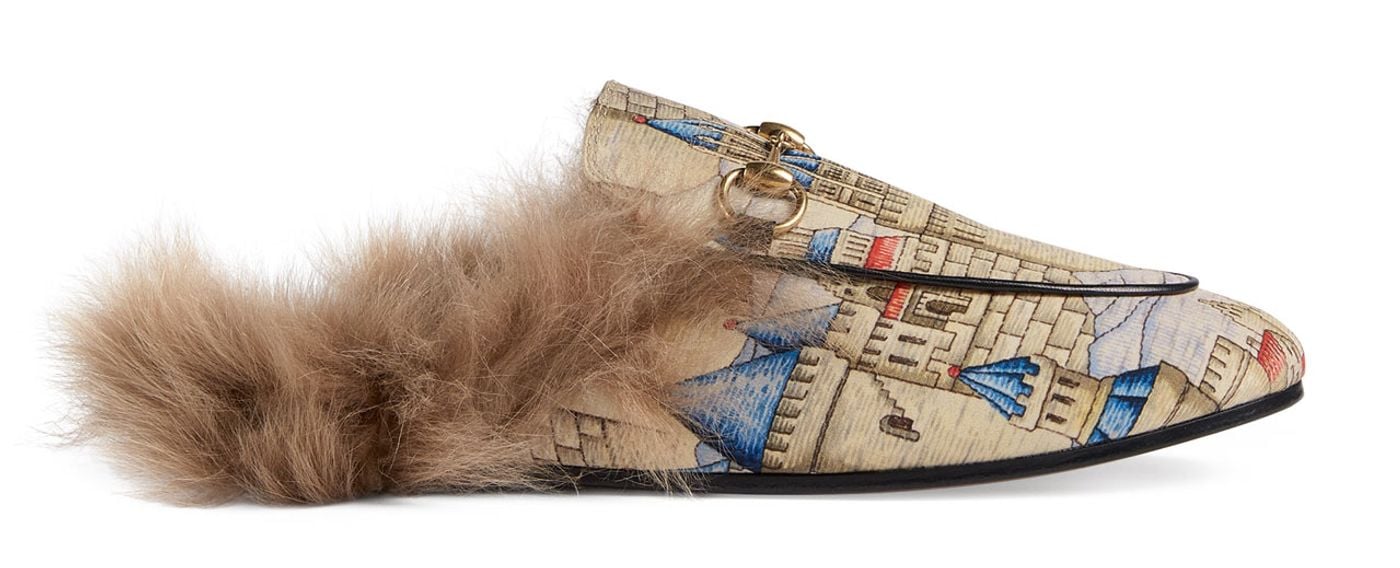
Slippers from the Gucci Garden series. Photo © Gucci.

Slippers from the Gucci Garden series. Photo © Gucci.
Gucci Garden’s maximalist menagerie unfolds under the watchful eye of Alessandro Michele, not only figuratively but also symbolically as a new eye design created by Michele as the designated symbol of the project and gloriously projected onto the palazzo’s façade at night. The eye, which can also be seen on small leather goods and gifts, also signals a series of new motifs that are being introduced into the Gucci visual lexicon.
Michele talks about Gucci Garden metaphorically as a state of mind “populated with plants and animals, like the snake, which slips in everywhere, and in a sense, symbolises a perpetual beginning and a perpetual return.” And much like a rich and multi-coloured garden blossoming with flowers and verdant foliage that teems with butterflies and other wonders of the natural world, Gucci Garden reveals a trove of ideas and inspirations constantly rejuvenated by an endless supply of imagination and creativity.
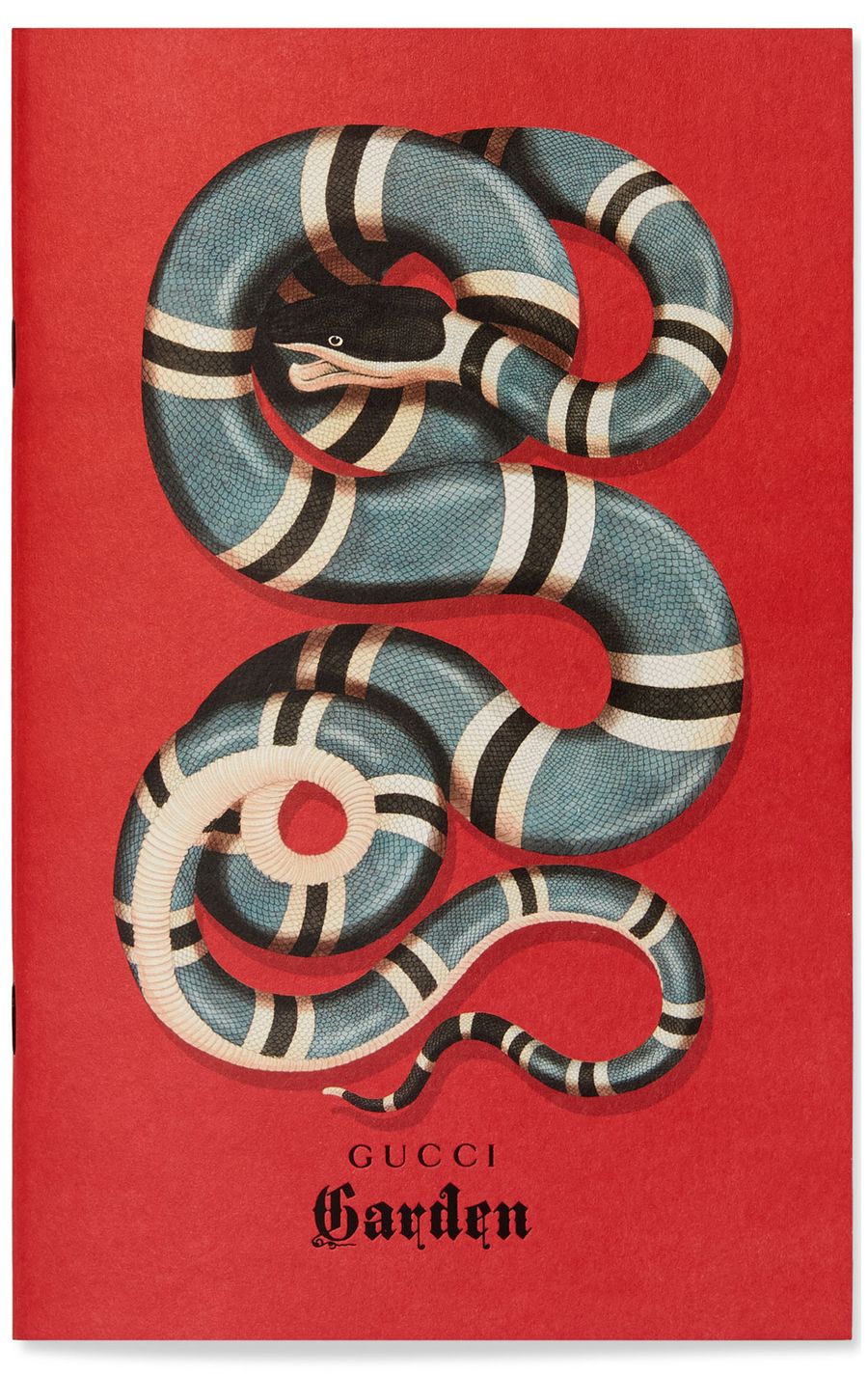
Notebook from the Gucci Garden series. Photo © Gucci.
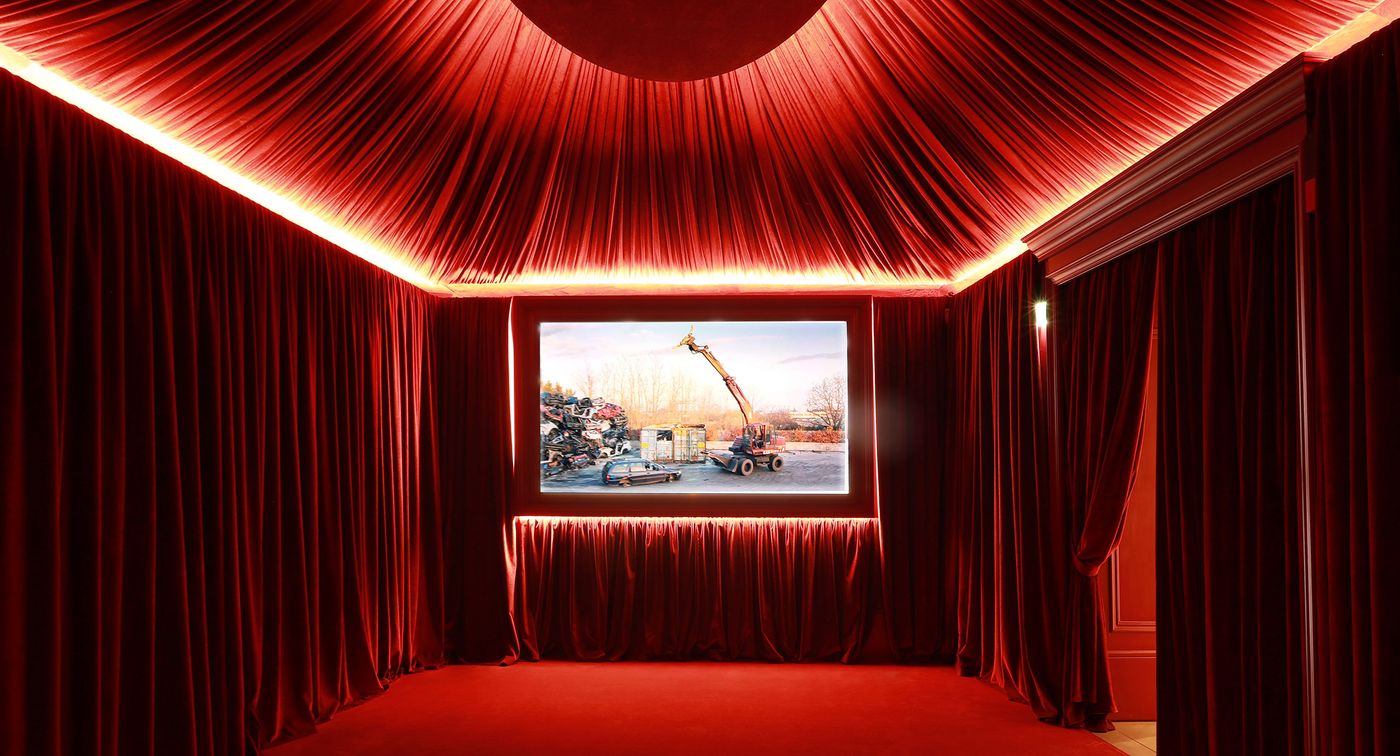
Gucci Garden Cinema. Photo © Gucci.
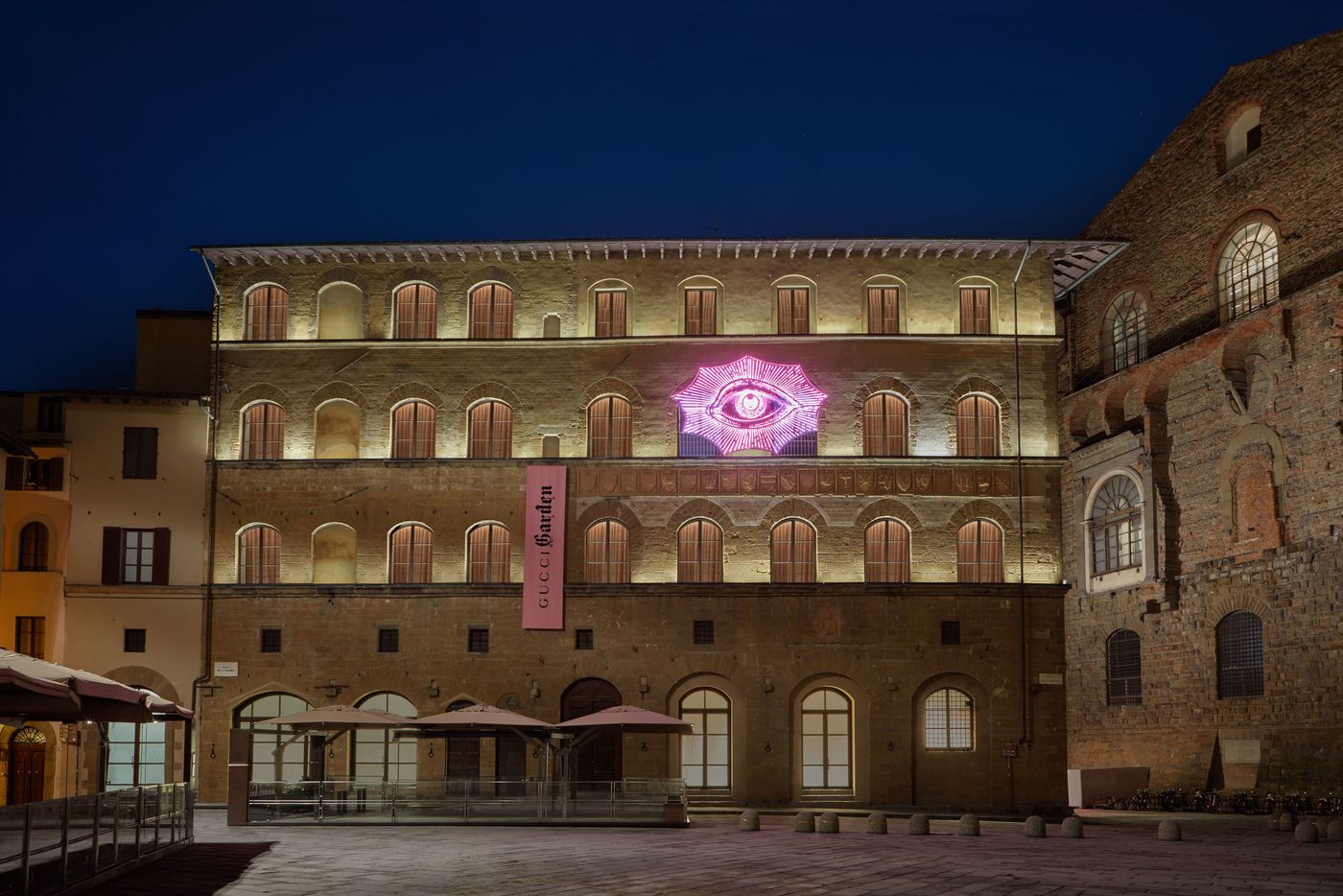
Gucci Garden facade. Photo © Gucci.
